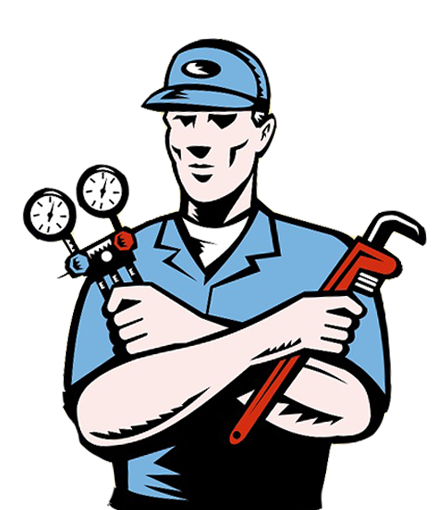Air duct installation is a crucial part of setting up a comfortable and efficient living environment in your new home. Properly installed air ducts ensure that heating, ventilation, and air conditioning (HVAC) systems work effectively, providing consistent airflow throughout the house. Without well-planned air ducts, you may face issues like uneven temperatures and higher energy costs.
Let’s explore the key aspects of air duct installation to ensure your new home has a reliable and efficient HVAC system.
Understanding the Basics of Air Duct Installation
What Is Air Duct Installation?
Air duct installation is the process of setting up a network of ducts that distribute air from your HVAC system throughout your home. These ducts can carry heated or cooled air, ensuring that each room reaches and maintains a comfortable temperature. Proper installation is crucial for efficient HVAC performance.
Importance of Proper Air Duct Installation
Proper air duct installation is essential for a few key reasons. First, it ensures that the air being circulated is clean, as it can prevent dust and other particles from entering the airflow. Second, it helps maintain energy efficiency, reducing waste and lowering energy bills. Third, well-installed ducts provide consistent airflow, giving every room the desired climate without hot or cold spots.
Types of Air Ducts Used in New Homes
There are several types of air ducts commonly used in new homes. Each type has its specific purpose and advantages.
1. Sheet Metal Ducts: Known for their durability and strength, these ducts are often made of galvanized steel or aluminum.
2. Flexible Ducts: Made from plastic over a metal wire coil, flexible ducts are versatile and can be installed in tight spaces.
3. Fiberboard Ducts: These are rigid, cost-effective, and have excellent insulation properties. They are made of fiberglass strands compressed into boards.
Each type of duct serves a unique purpose and choosing the right one affects the overall efficiency of your HVAC system.
Step-by-Step Process for Efficient Air Duct Installation
Planning the Layout of Air Ducts
The first step is planning the layout of the air ducts. This involves mapping out where each duct will run through the house. Consider the size of each room, the location of vents and registers, and the overall design of the HVAC system. A well-planned layout ensures even air distribution and reduces the length of duct runs, which improves efficiency.
Selecting the Right Materials
Choosing the right materials for your air ducts is critical for long-term performance. Materials vary based on the type of ducts being used. For example, sheet metal ducts require metal sheets and insulation, while flexible ducts need a plastic covering and a metal wire coil. Always select materials that are durable, resistant to wear and tear, and provide good insulation properties.
Cutting and Assembling the Ductwork
Once the materials are selected, the next step is cutting and assembling the ductwork. Using precise measurements, cut the ducts to the required lengths. Then, assemble the duct sections by connecting them with metal fasteners or clamps. Ensure that each connection is tight to prevent any air leaks.
Sealing and Insulating the Ducts
After assembly, seal all the joints and seams with mastic or foil tape to prevent air leakage. Proper sealing ensures that the air remains within the ducts and reaches the intended rooms. Additionally, insulate the ducts to maintain the desired temperature of the air being transported. This insulation helps reduce energy loss and enhances the overall efficiency of your HVAC system.
Testing the System for Efficiency
Finally, test the entire duct system for efficiency. Check for any leaks, measure the airflow, and ensure that the system meets the required performance standards. This final step verifies that the air ducts have been installed correctly and will function as expected in maintaining a comfortable environment.
Common Mistakes to Avoid During Air Duct Installation
Incorrect Sizing of Ducts
One common mistake is using incorrectly sized ducts. If ducts are too small, they can restrict airflow, causing the HVAC system to work harder and become less efficient. Conversely, ducts that are too large can lead to uneven airflow and increased energy costs. Therefore, it is essential to calculate the correct duct size based on the HVAC system’s capacity and the home’s dimensions.
Poor Sealing Practices
Poorly sealed ductwork can lead to air leaks, reducing the efficiency of the HVAC system. Air leaks can cause the system to lose conditioned air, leading to higher energy consumption and costs. Always use appropriate sealing methods, such as mastic or foil tape, on all joints and seams to prevent air leakage.
Inadequate Insulation
Insulating ductwork is vital for maintaining the desired temperature of the air being transported. Inadequate insulation can result in energy loss and inconsistent room temperatures. Make sure that all ducts, especially those running through unconditioned spaces like attics or basements, are well-insulated to enhance the system’s efficiency.
Improper Placement of Vents
The placement of vents is crucial for effective air distribution. Poorly placed vents can cause uneven heating and cooling, leaving some rooms too hot or too cold. Ensure that vents are strategically located to provide consistent airflow to all areas of the home.
The Benefits of Hiring Our Professional Technicians
Expertise and Experience
Our professional technicians bring expertise and experience to every air duct installation project. They are trained in best practices and have the knowledge to handle any challenges that may arise. With their experience, they ensure that the installation is executed flawlessly, providing optimal performance for your HVAC system.
Use of Advanced Tools and Techniques
Our technicians use advanced tools and techniques to ensure precision and efficiency during the installation process. Modern tools help in accurate measurements, cutting, and sealing, reducing the chances of errors. These advanced techniques contribute to a more reliable and efficient air duct system.
Time and Cost Efficiency
Hiring our professionals can save you both time and money. They complete the installation quickly and efficiently, minimizing downtime and disruptions. Their expertise ensures that the job is done right the first time, reducing the need for future repairs and maintenance, translating to long-term cost savings.
Ensuring Compliance with Industry Standards
Our technicians ensure that all work complies with industry standards and regulations. Adherence to standards guarantees that the installation is safe and effective. This compliance also provides peace of mind, knowing that the system is installed correctly and will function as intended.
Conclusion
Efficient air duct installation is essential for a comfortable and energy-efficient home. By understanding the basics, following the proper steps, and avoiding common mistakes, you can ensure that your HVAC system performs optimally. Planning the layout, selecting the right materials, and properly sealing and insulating the ducts are all critical components of a successful installation.
Hiring our professional technicians at Precise Air Systems, Inc. can further ensure that the job is done correctly. Our experts bring experience, advanced tools, and knowledge of industry standards to every project. They work efficiently, saving you time and reducing long-term costs.
If you’re ready to improve the comfort and efficiency of your new home, contact us today. Let our professionals handle your needs regarding air duct installation in Glendale, providing you with a reliable and effective HVAC system.










